Federal Court of Australia
Carbon Revolution Limited, in the matter of Carbon Revolution Limited (ACN 128 274 653) [2023] FCA 1081
ORDERS
IN THE MATTER OF CARBON REVOLUTION LIMITED (ACN 128 274 653) | ||
Plaintiff | ||
AND: | ||
TWIN RIDGE CAPITAL ACQUISITION CORP Interested Person | ||
DATE OF ORDER: |
THE COURT NOTES THAT:
A. The Australian Securities and Investments Commission (ASIC) has been given at least 14 days’ notice of the hearing of this application as required by s 411(2)(a) of the Corporations Act 2001 (Cth) (Act).
B. The Court is satisfied that ASIC has had a reasonable opportunity to:
i. examine the terms of the proposed scheme of arrangement to which the application relates and a draft explanatory statement relating to that arrangement; and
ii. make submissions to the Court in relation to the proposed scheme of arrangement and the draft explanatory statement.
C. The letter from ASIC to the directors of the plaintiff dated 25 August 2023 at Annexure AL-02 to the affidavit of Alexandra Mary Lockie affirmed on 27 August 2023.
THE COURT ORDERS THAT:
1. Pursuant to subsection 411(1) and s 1319 of the Act, the plaintiff (CBR) convene and hold a meeting of its shareholders (Scheme Meeting):
(a) for the purpose of considering and, if thought fit, agreeing (with or without modification) to the scheme of arrangement (Scheme) proposed to be made between CBR and its shareholders, the terms of which are set out in Annexure A to these orders; and
(b) to be held on 9 October 2023 commencing at 1.00 pm (Melbourne time), to be conducted both in-person at Anglesea Room, Waurn Ponds Estate, Nicol Drive South, Waurn Ponds, Geelong, Victoria and virtually via an online platform accessible via the URL https://meetings.linkgroup.com/CBRScheme23.
2. Pursuant to subsection 411(1) and s 1319 of the Act, the Scheme Meeting be convened by sending, on or before 8 September 2023:
(a) in the case of CBR shareholders who have either:
(i) elected to receive shareholder communications electronically; or
(ii) not elected to receive shareholder communications electronically but have registered an email address with CBR and have not elected to receive shareholder communications in hard copy,
(Email Shareholders) an email which contains hyperlinks to an online portal or website where Email Shareholders can:
(iii) view and download an electronic copy of a document substantially in the form of the document which is Annexure “AL-05” to the affidavit of Alexandra Mary Lockie affirmed on 6 September 2023 (including its annexures) (Scheme Booklet);
(iv) lodge online a proxy and voting instructions for the Scheme Meeting;
(v) view, listen to and participate in the Scheme Meeting online;
(b) in the case of CBR shareholders who have elected to receive shareholder communications in hard-copy (Hard Copy Shareholders), the following hard-copy documents:
(i) a letter (Hard Copy Letter) setting out URL addresses from which Hard Copy Shareholders can:
A. view and download an electronic copy of the Scheme Booklet;
B. lodge online a proxy for the Scheme Meeting and voting instructions;
C. view, listen to and participate in the Scheme Meeting online;
(ii) the Scheme Booklet; and
(iii) a proxy form and a reply-paid envelope to lodge the proxy form and voting instructions for the Scheme Meeting;
(c) in the case of CBR shareholders who are not Hard Copy Shareholders or Email Shareholders, the Hard Copy Letter.
3. The documents referred to in orders 2(b) and 2(c) above be sent:
(a) in the case of CBR shareholders whose registered address is within Australia, by prepaid ordinary post to the shareholder’s address recorded in CBR’s share register; and
(b) in the case of CBR shareholders whose registered address is outside Australia, by airmail or international courier service to the shareholder’s address recorded in CBR’s share register.
4. Voting on the resolution to agree to the Scheme is to be conducted by way of a poll.
5. A proxy in respect of the Scheme Meeting will be valid and effective if, and only if, it is completed and delivered in accordance with its terms or a proxy is lodged online in accordance with the instructions on the online portal or website referred to in orders 2(a)(iv) and 2(b)(i)(B) and received by CBR by 1.30 pm (Melbourne time) on 7 October 2023.
6. James Douglas or, failing him, Dale McKee, be Chairperson of the Scheme Meeting.
7. The Chairperson of the Scheme Meeting has the power to adjourn the Scheme Meeting to such time, date and at such place (including electronically) as the Chairperson considers appropriate.
8. Pursuant to r 1.3 of the Federal Court (Corporations) Rules 2000, compliance with rr 2.15, 3.4 and Form 6 be dispensed with.
9. By no later than 5 days prior to the date of the second court hearing, CBR is to publish an announcement via the ASX Market Announcements Platform which sets out the details for the second court hearing and the process for any person wishing to appear at that hearing to oppose the approval of the Scheme, together with an address for service of CBR.
10. The further hearing of the originating process be listed for hearing at 10.15 am on 11 October 2023 (Melbourne time).
11. There be liberty to apply.
Note: Entry of orders is dealt with in Rule 39.32 of the Federal Court Rules 2011.












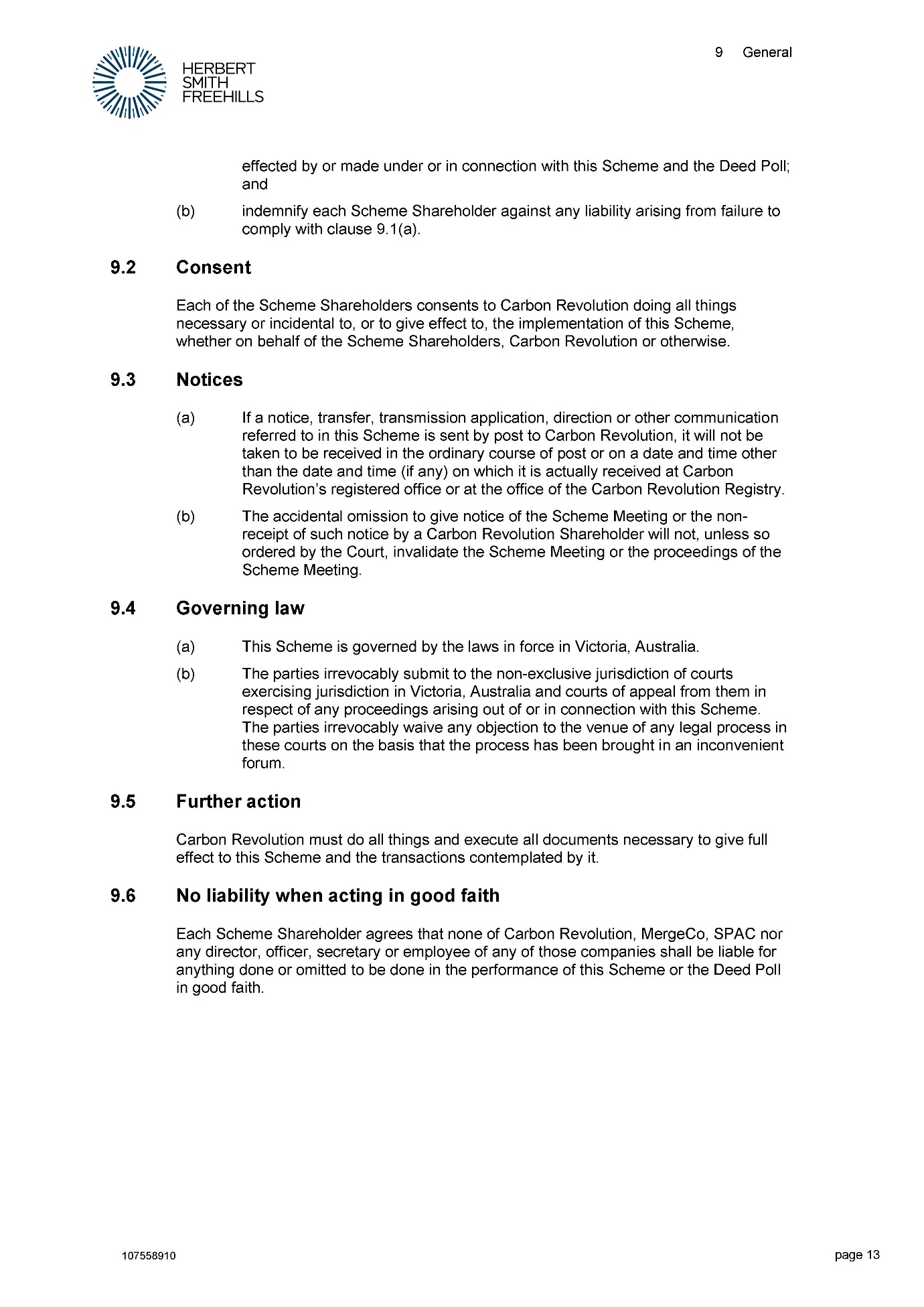
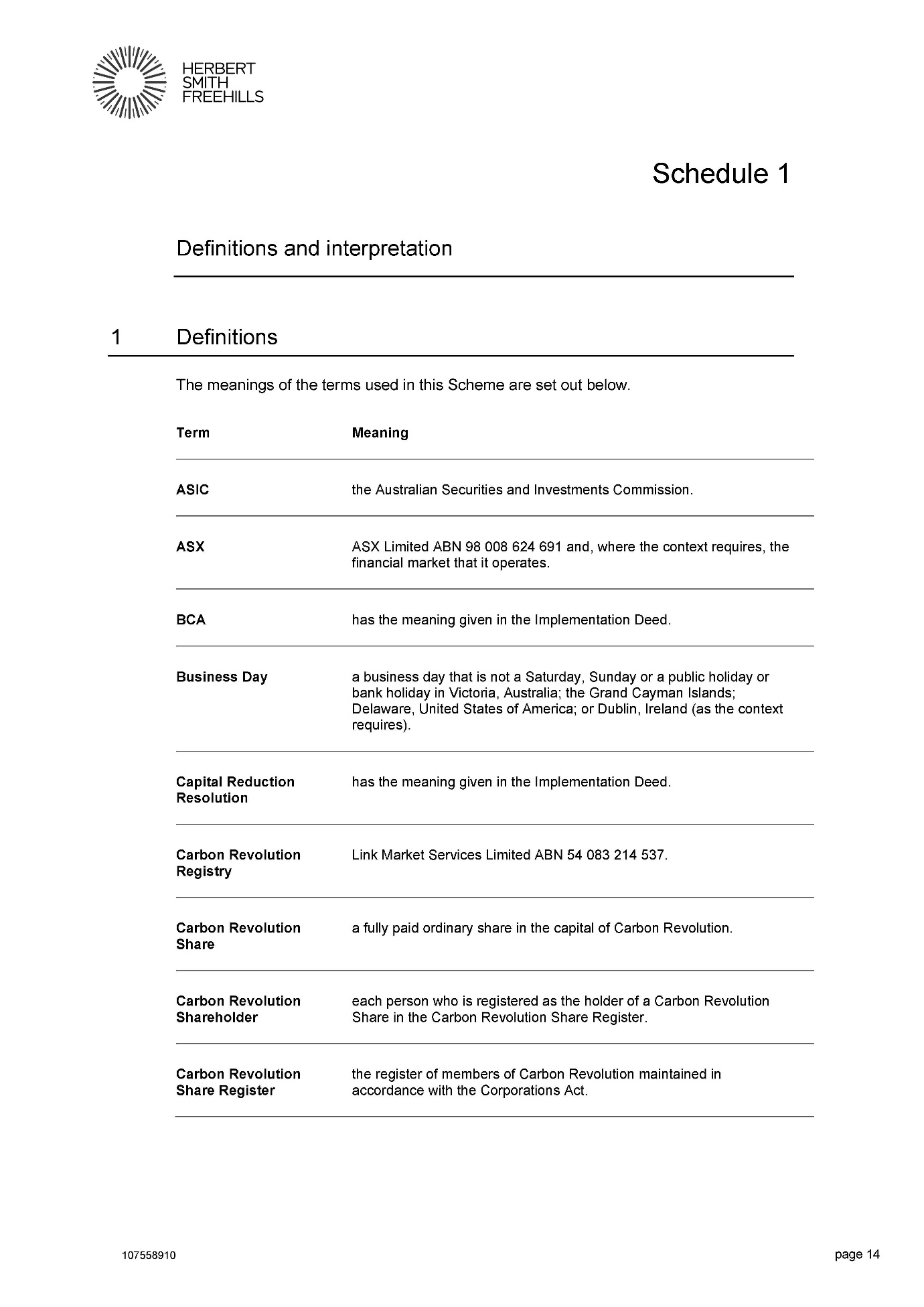
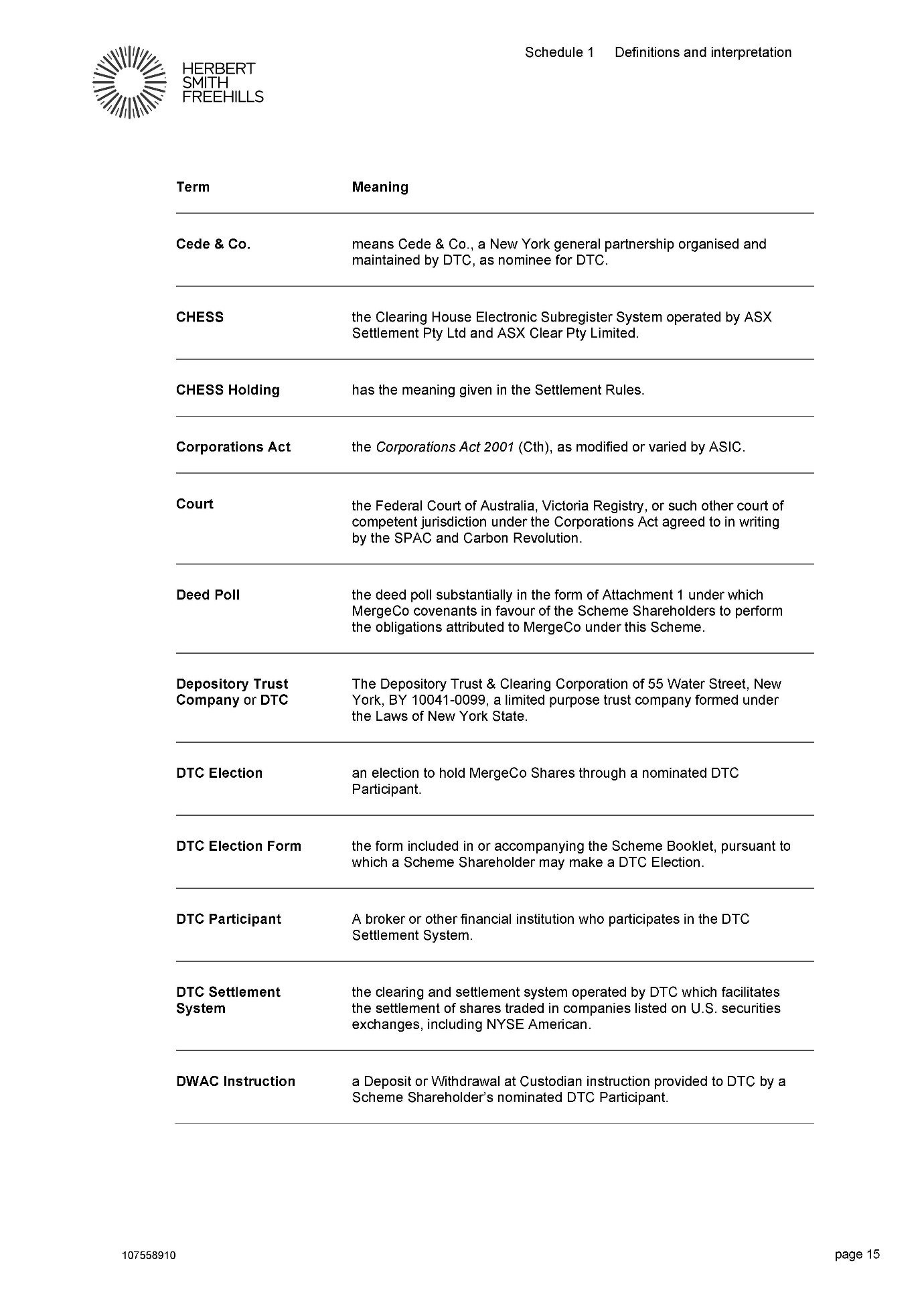
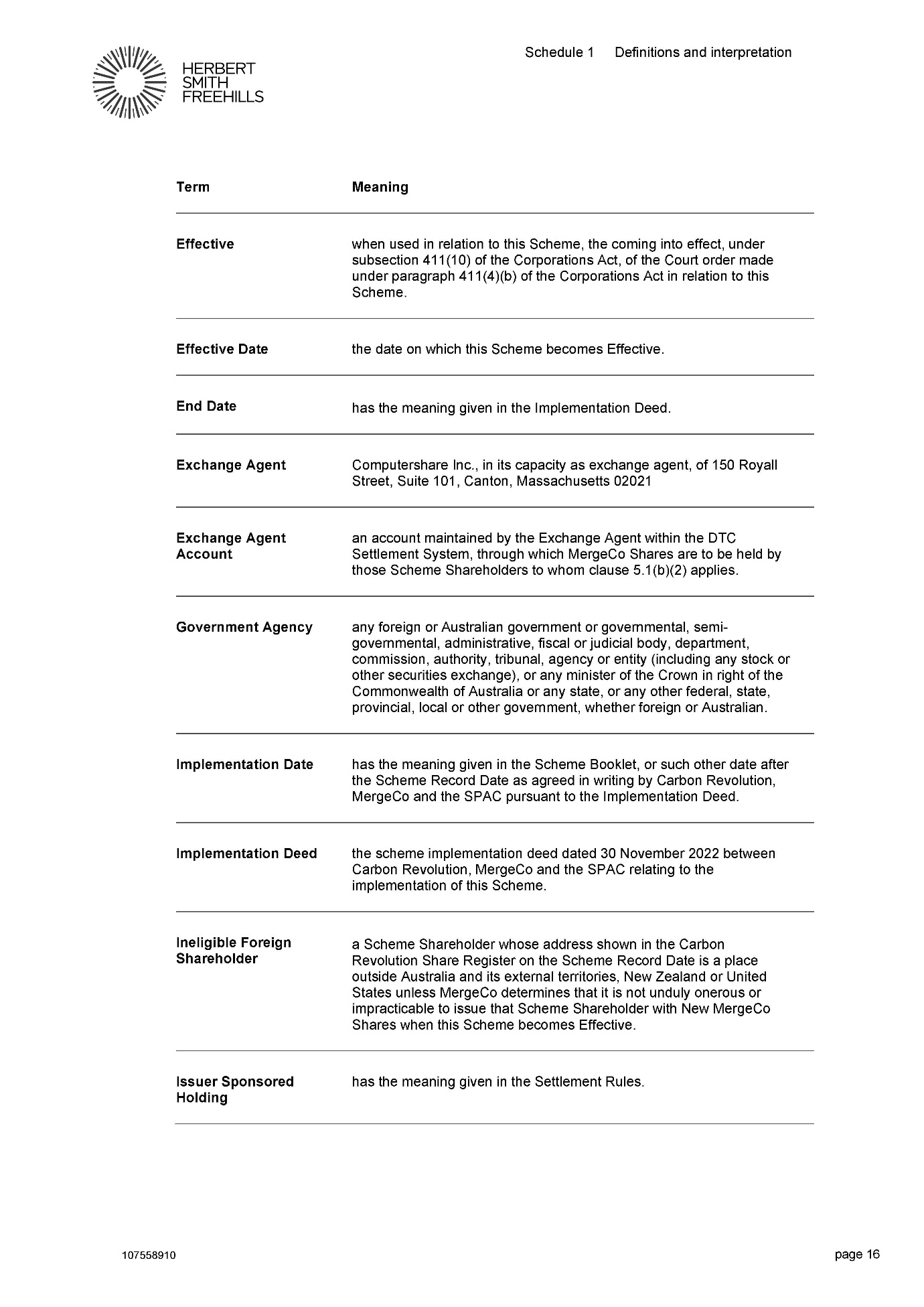
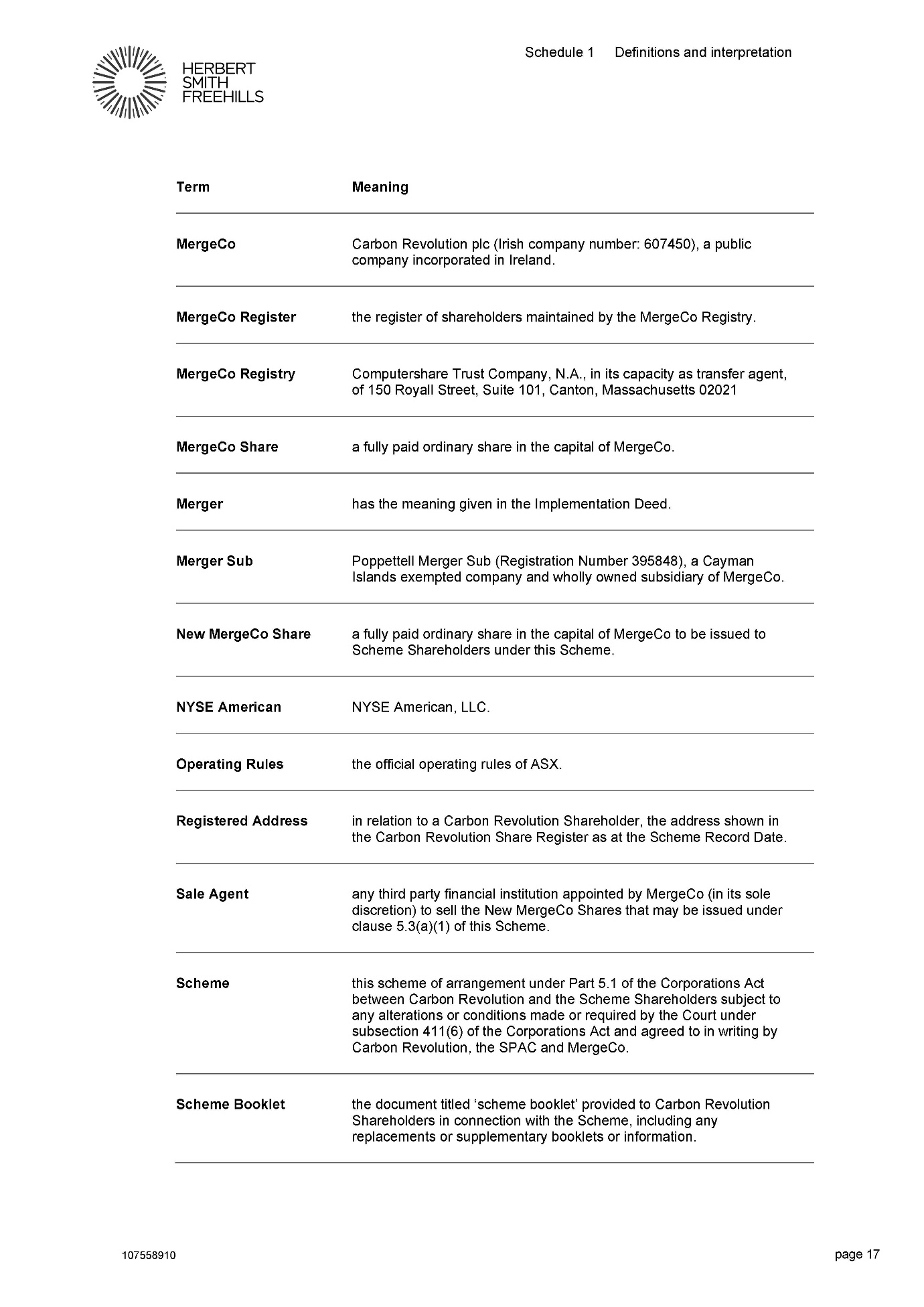
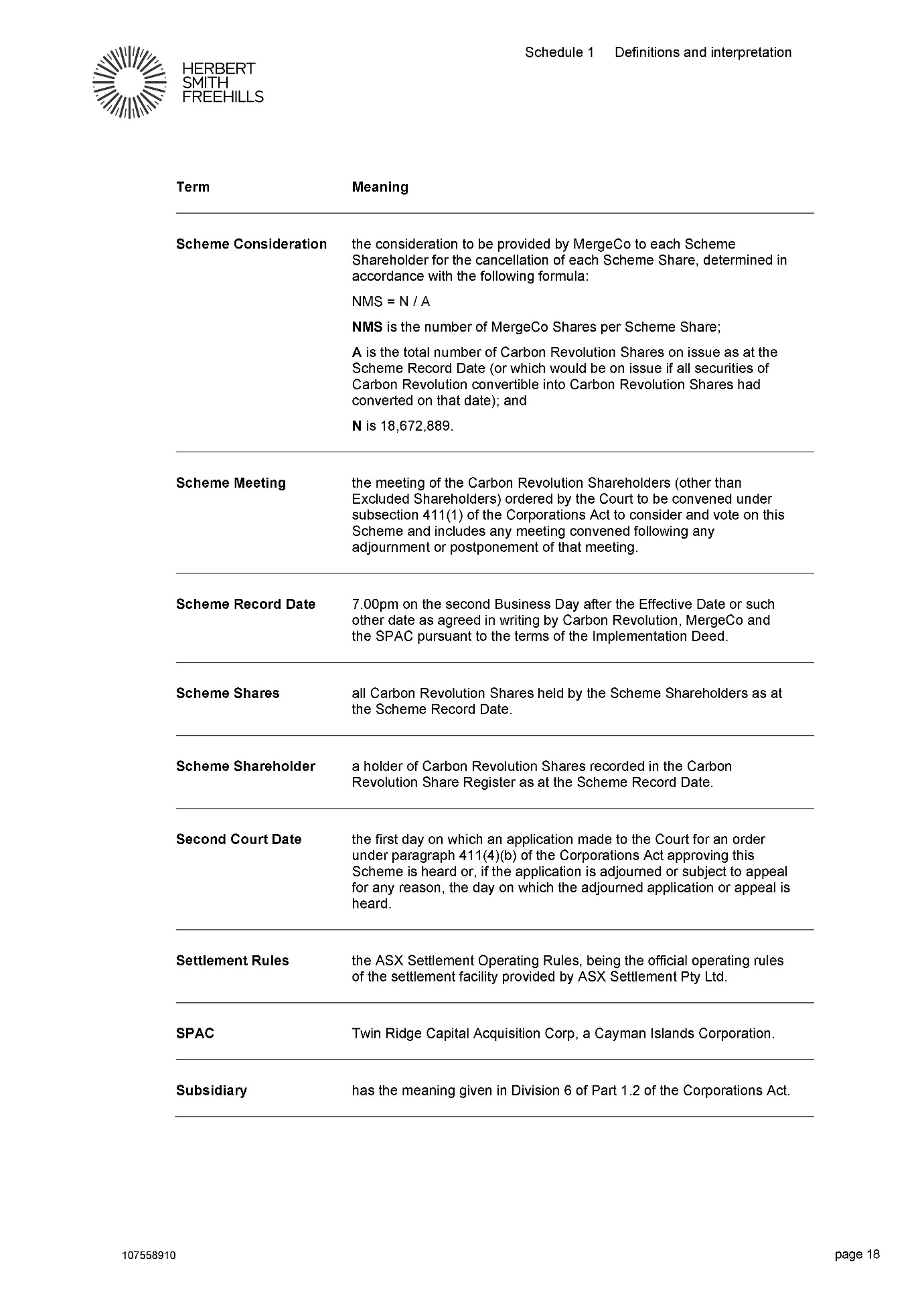
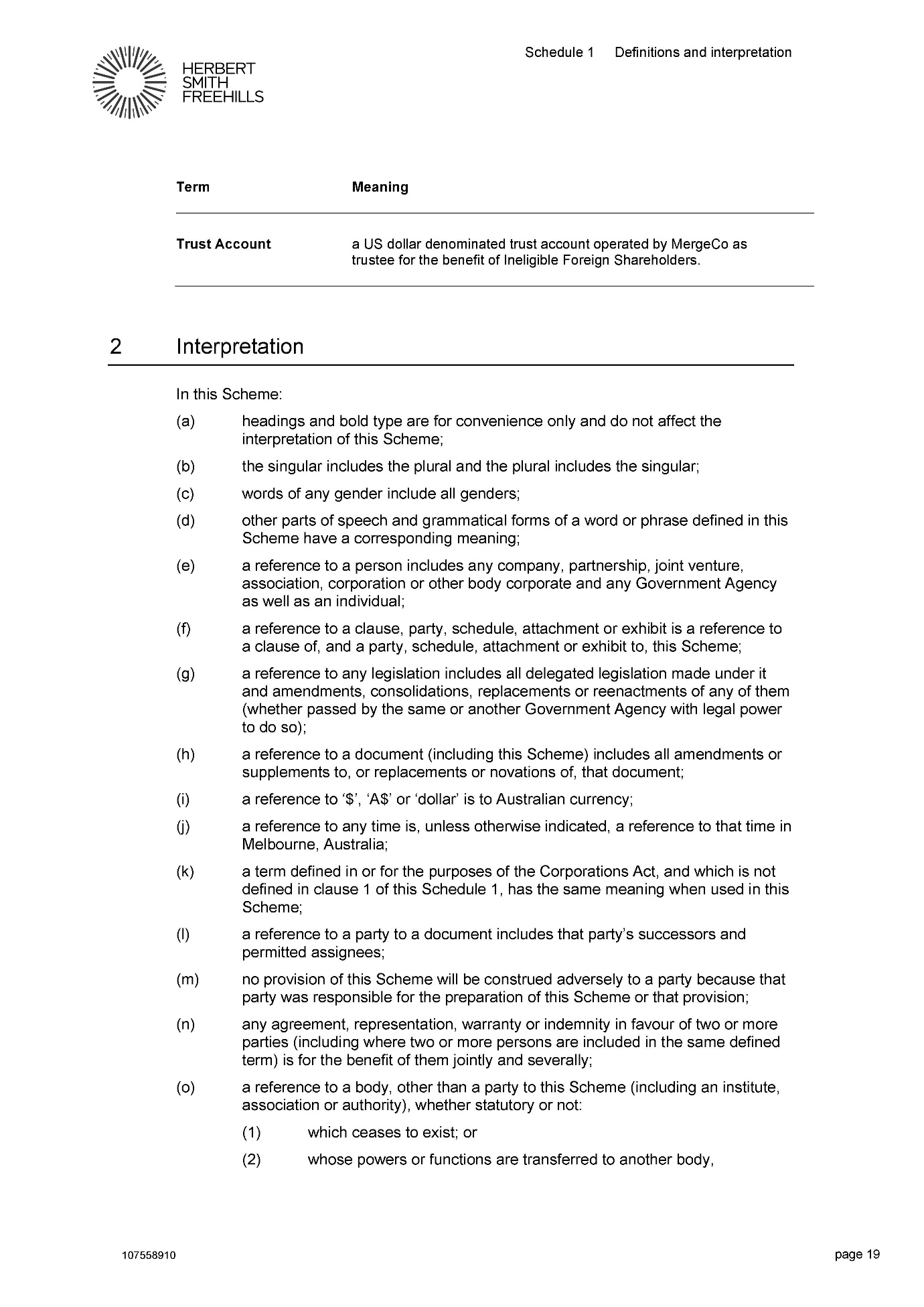
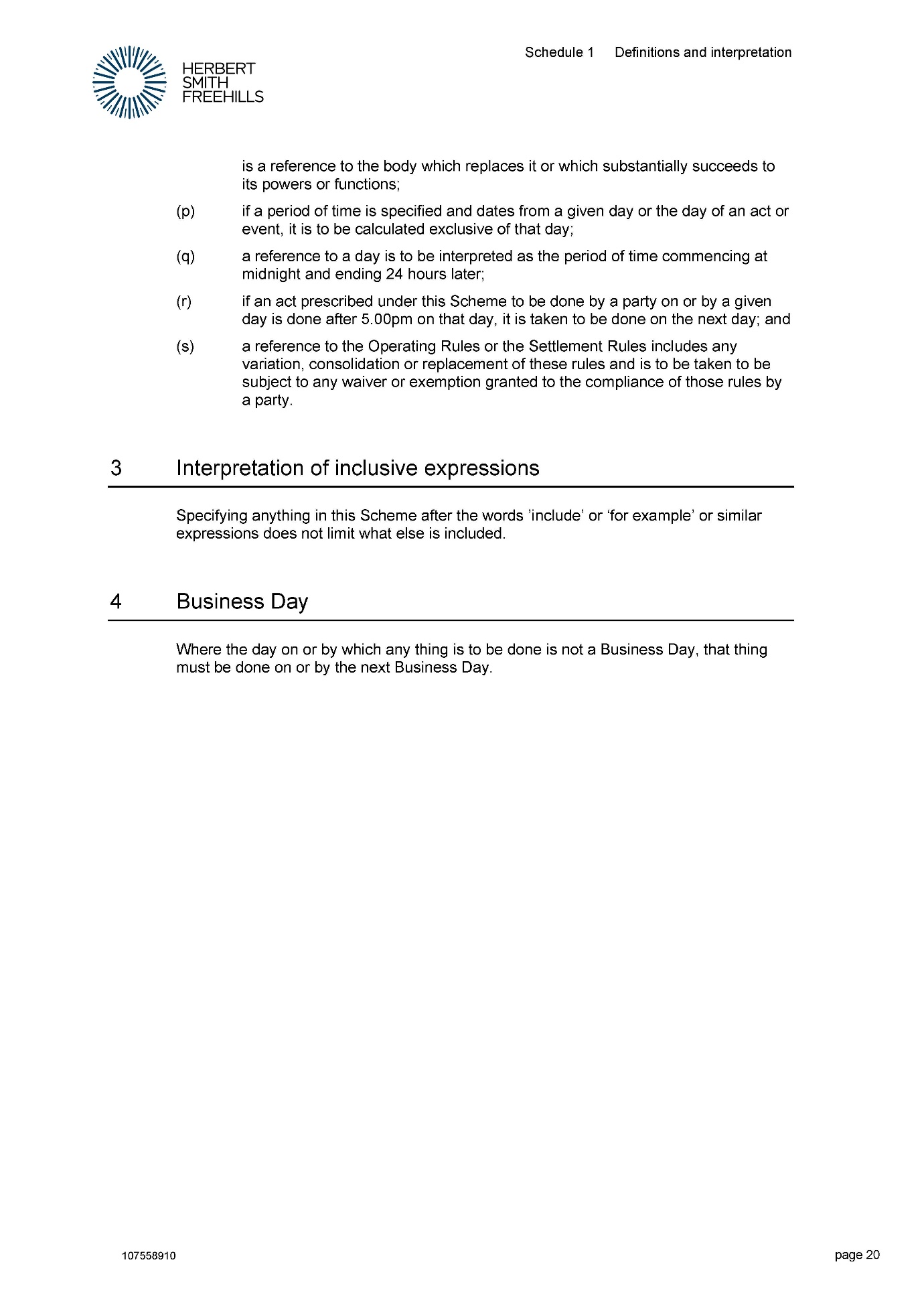
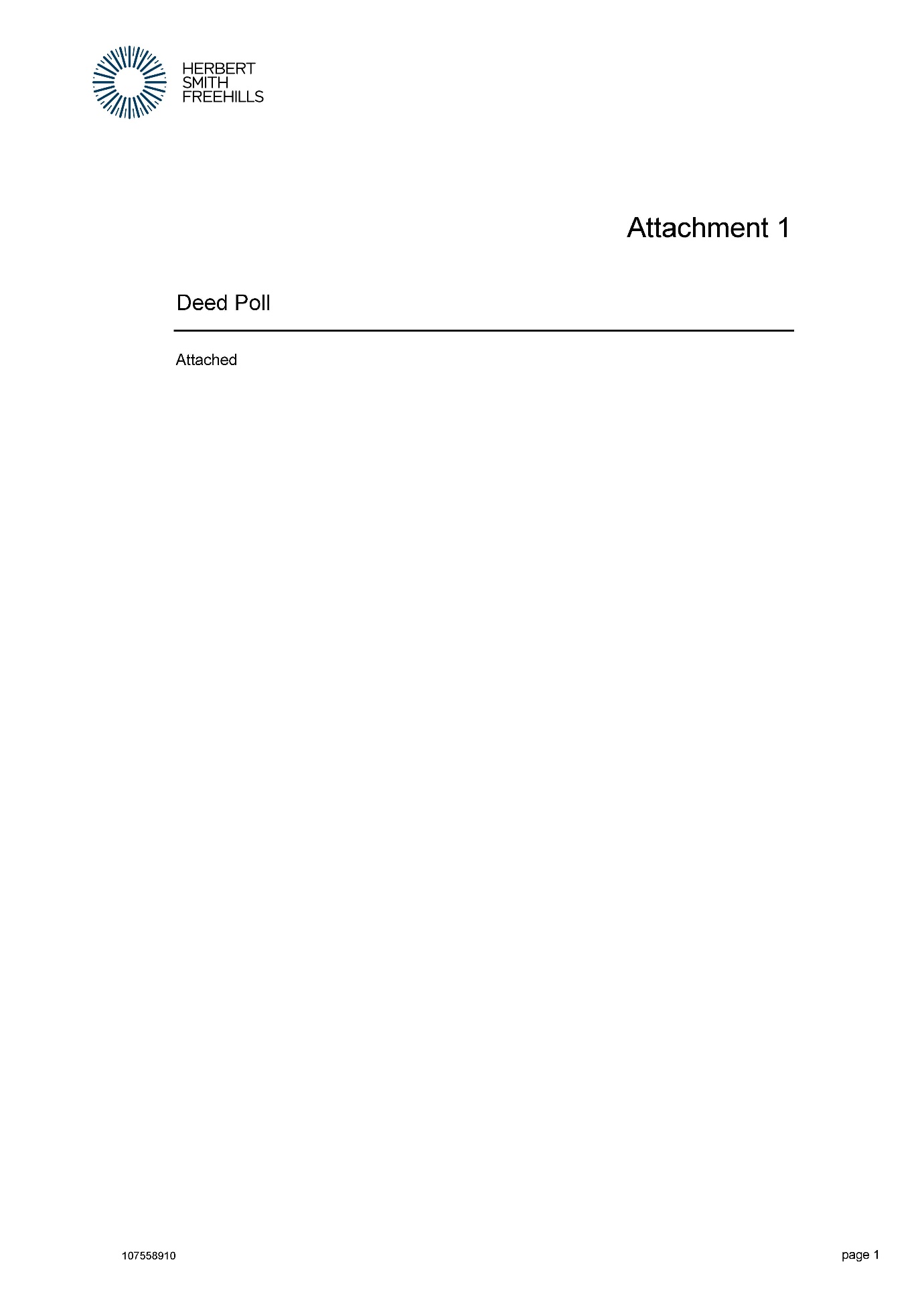
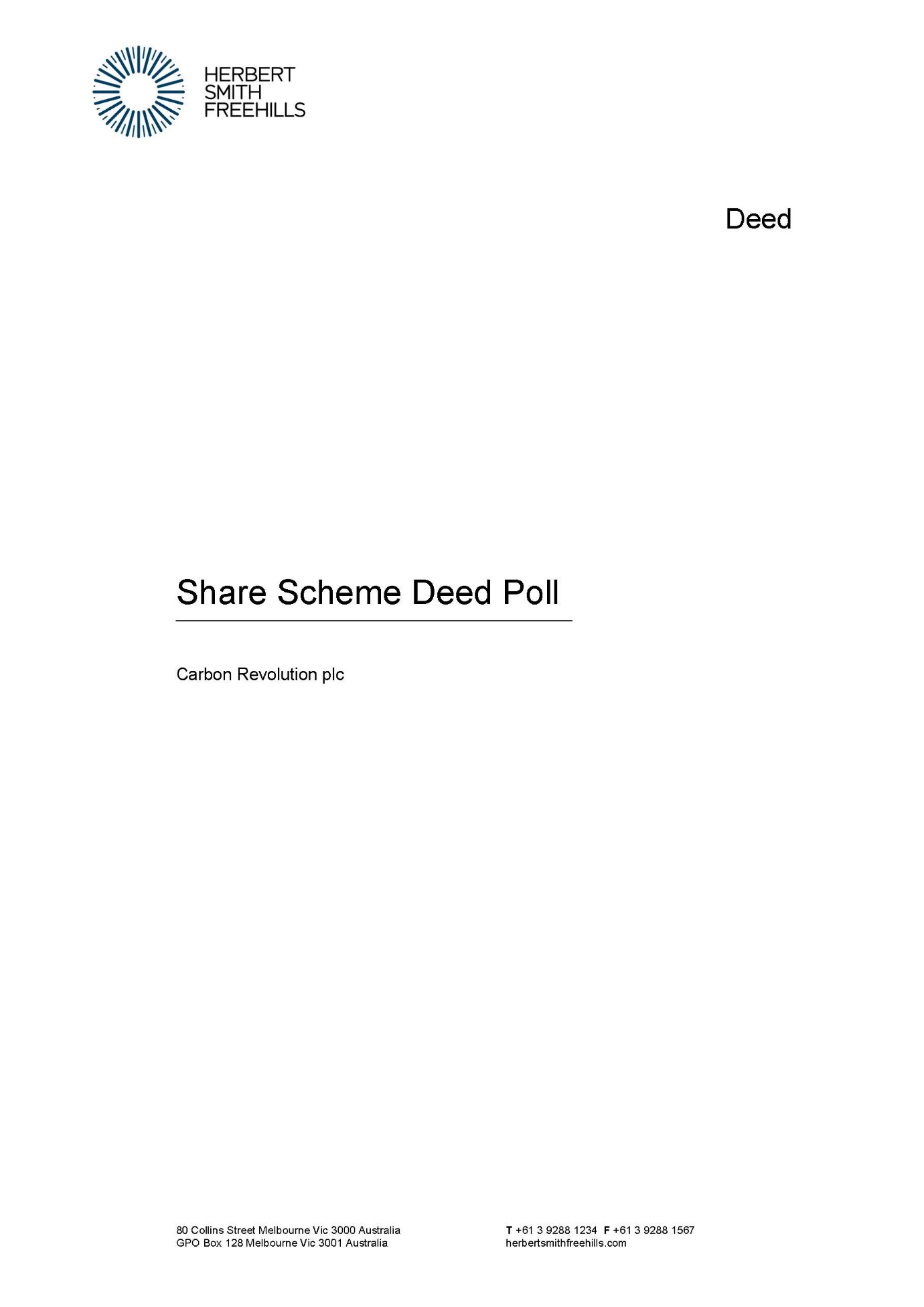
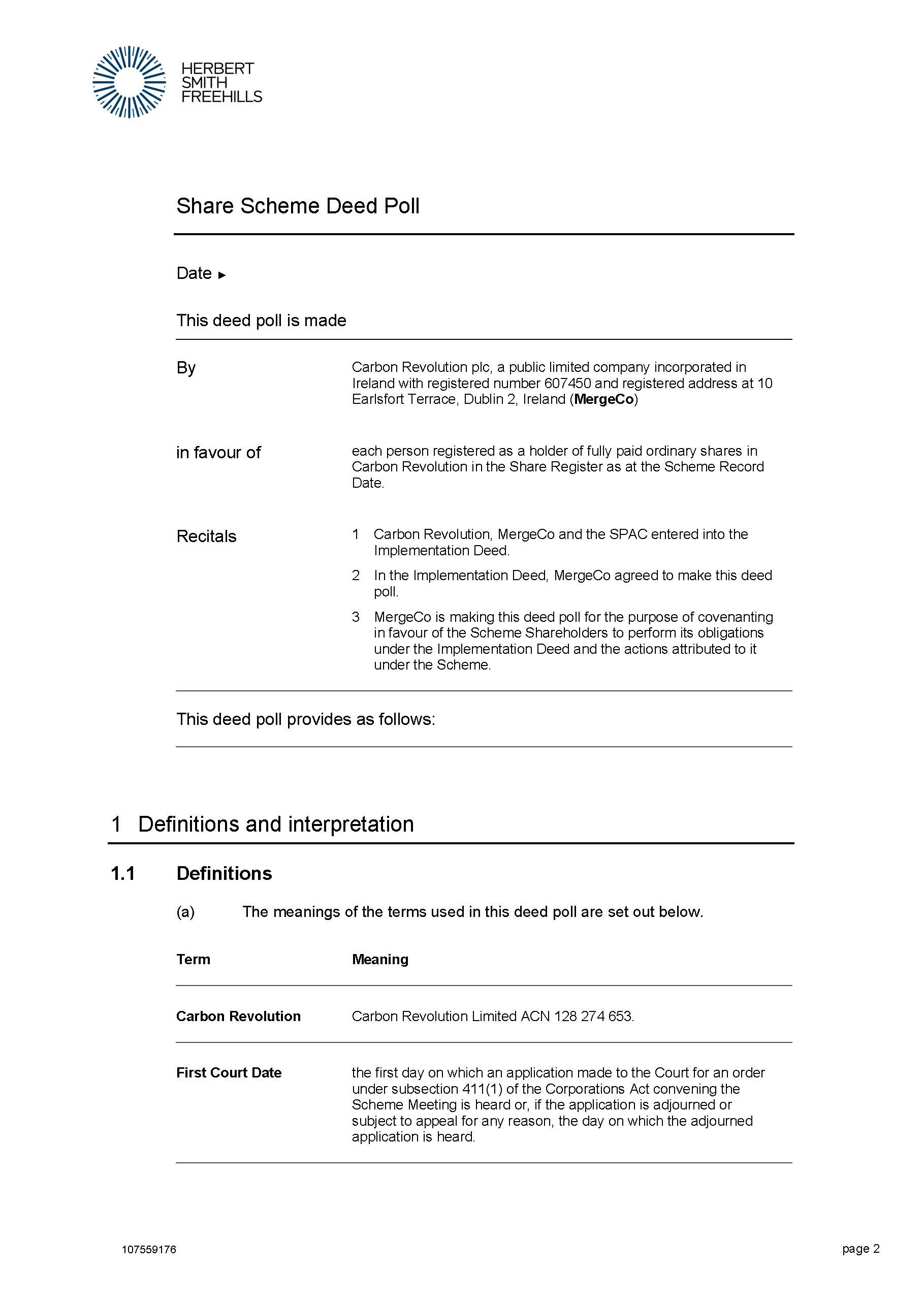
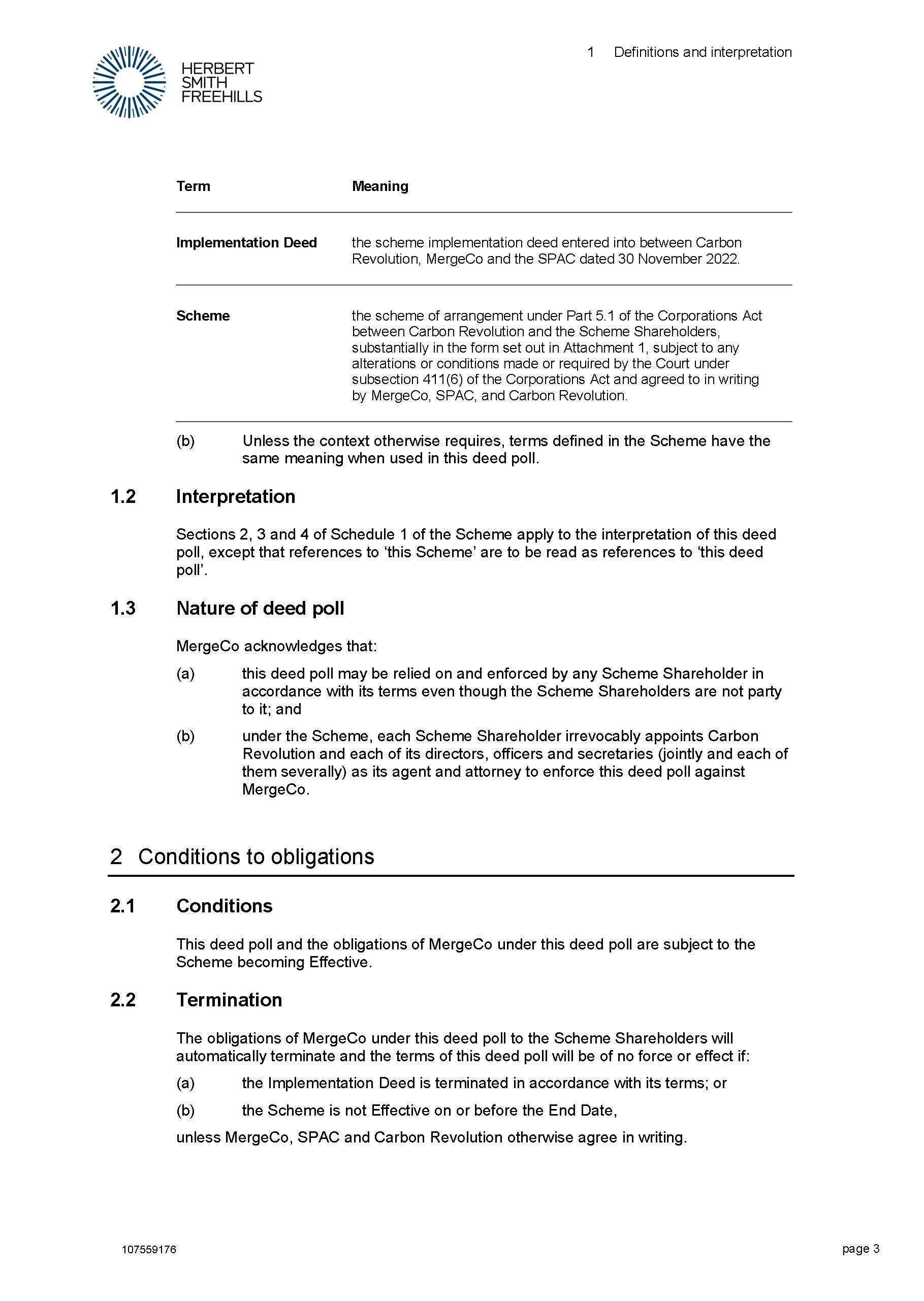
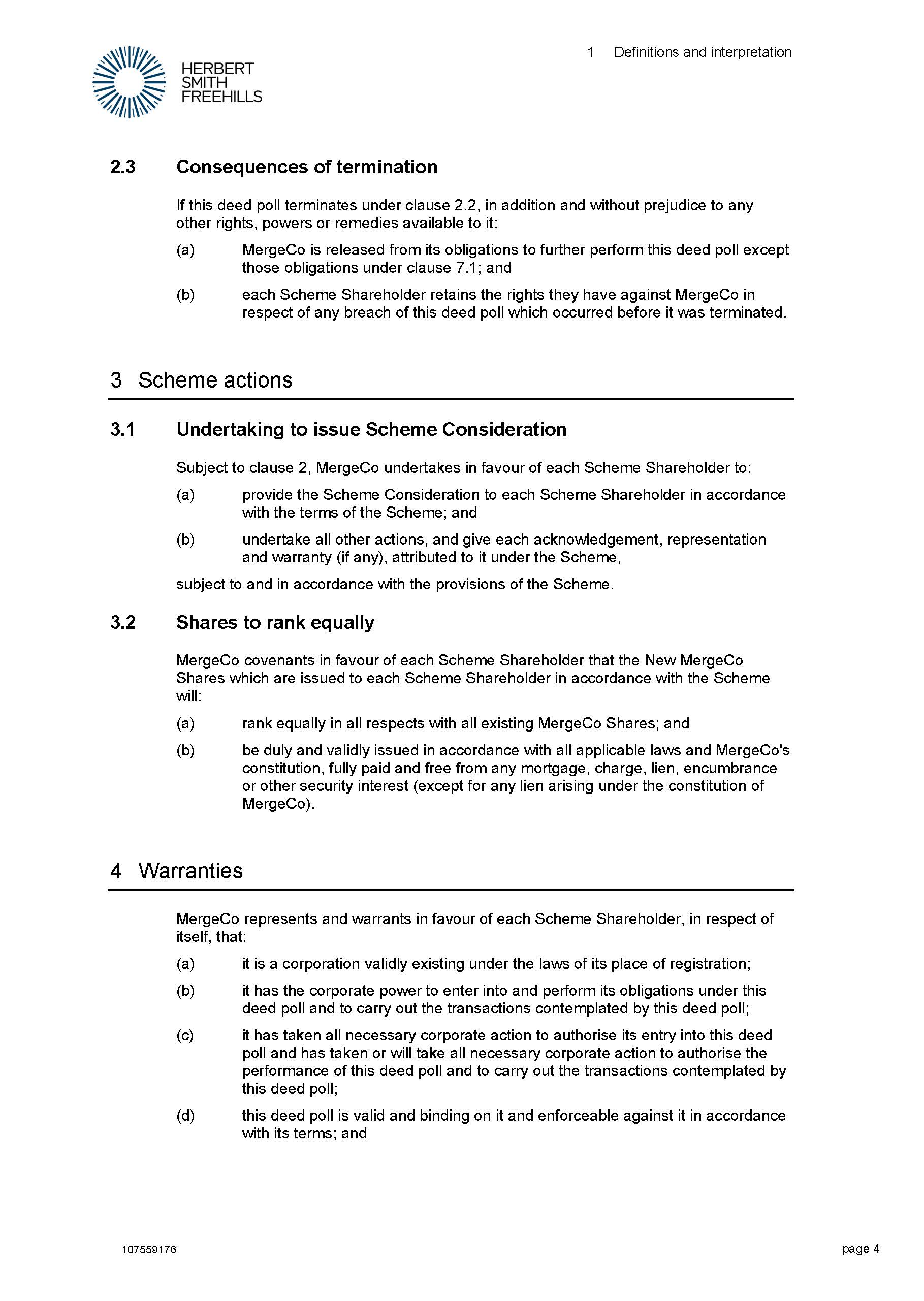
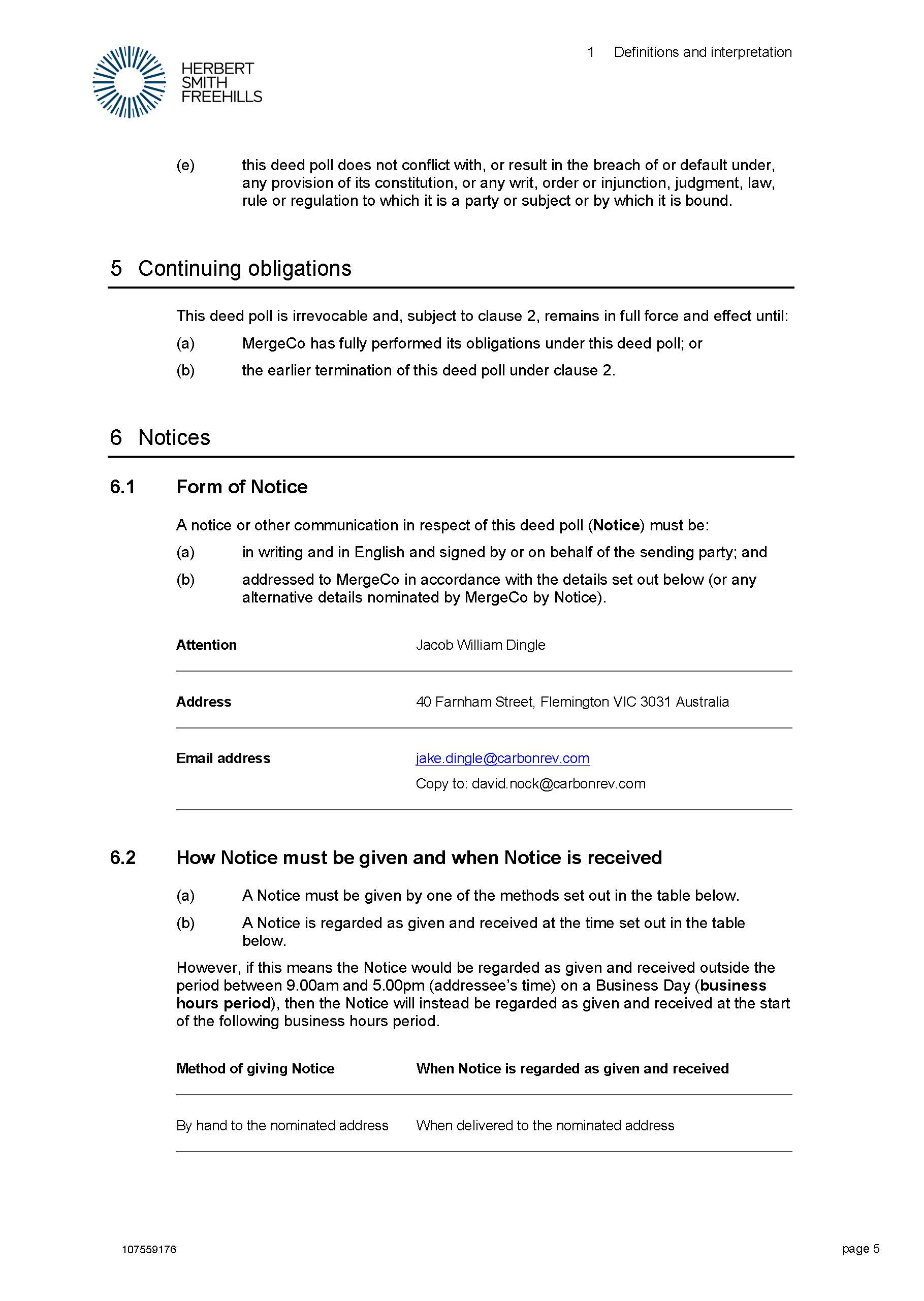
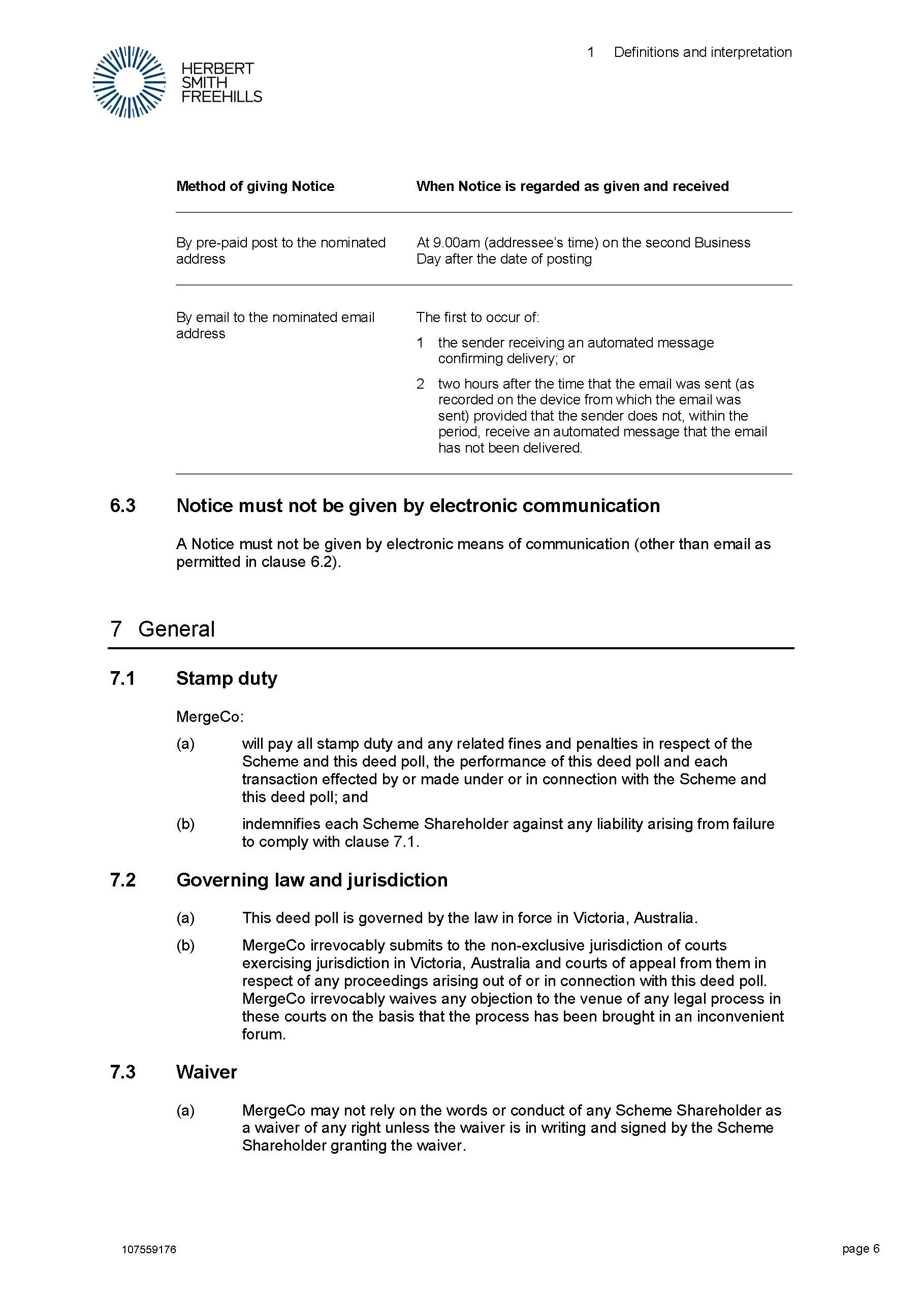
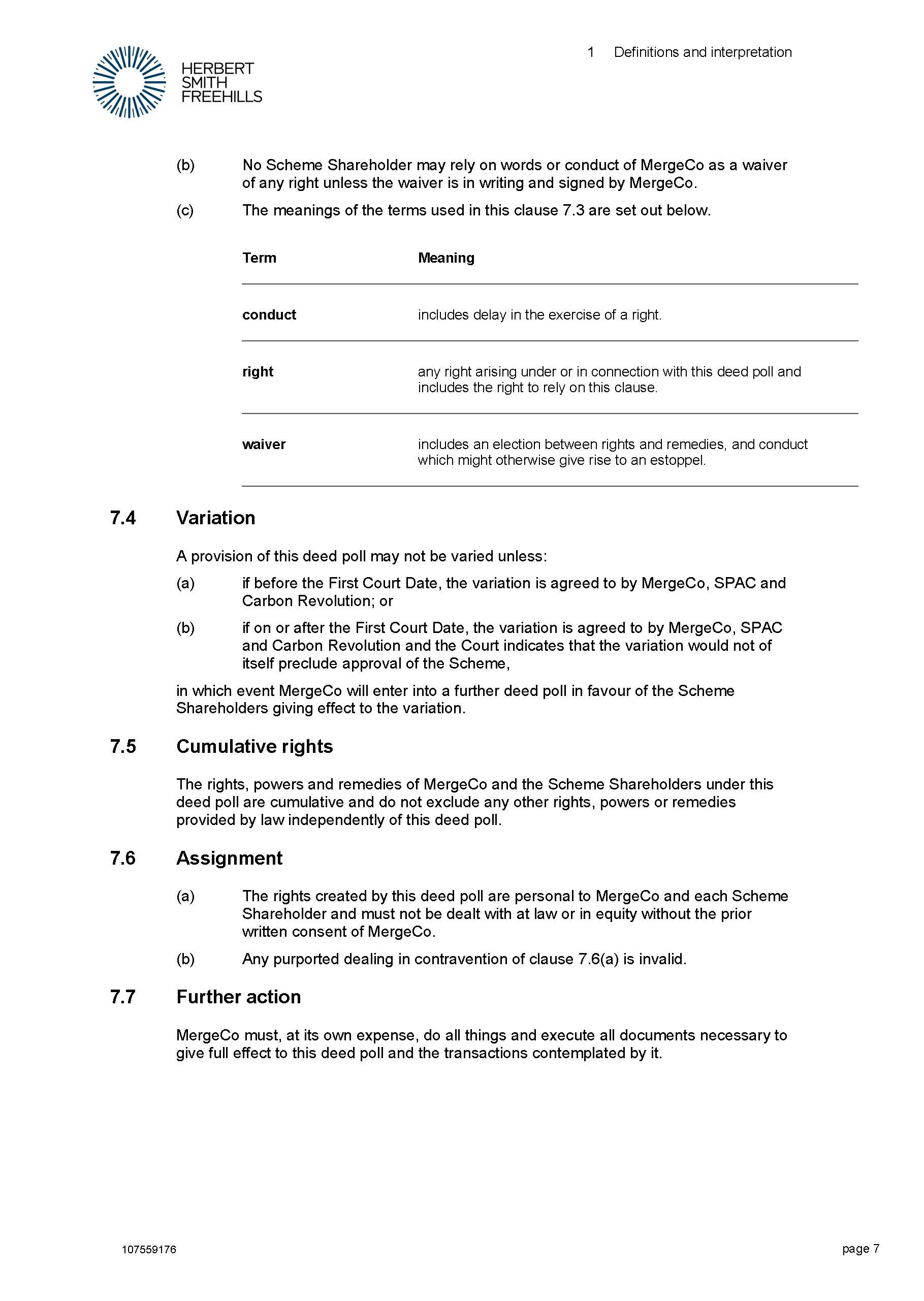
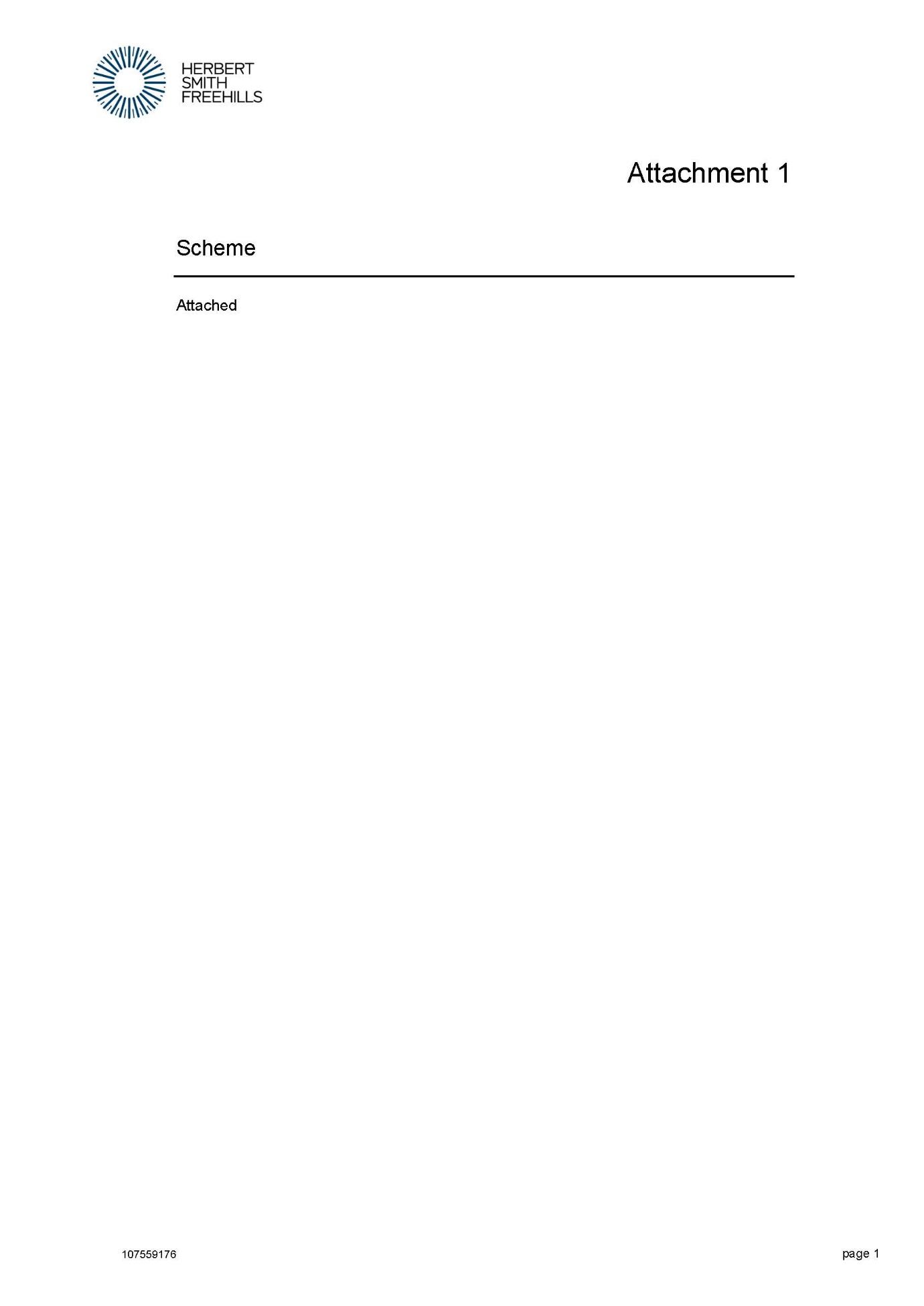
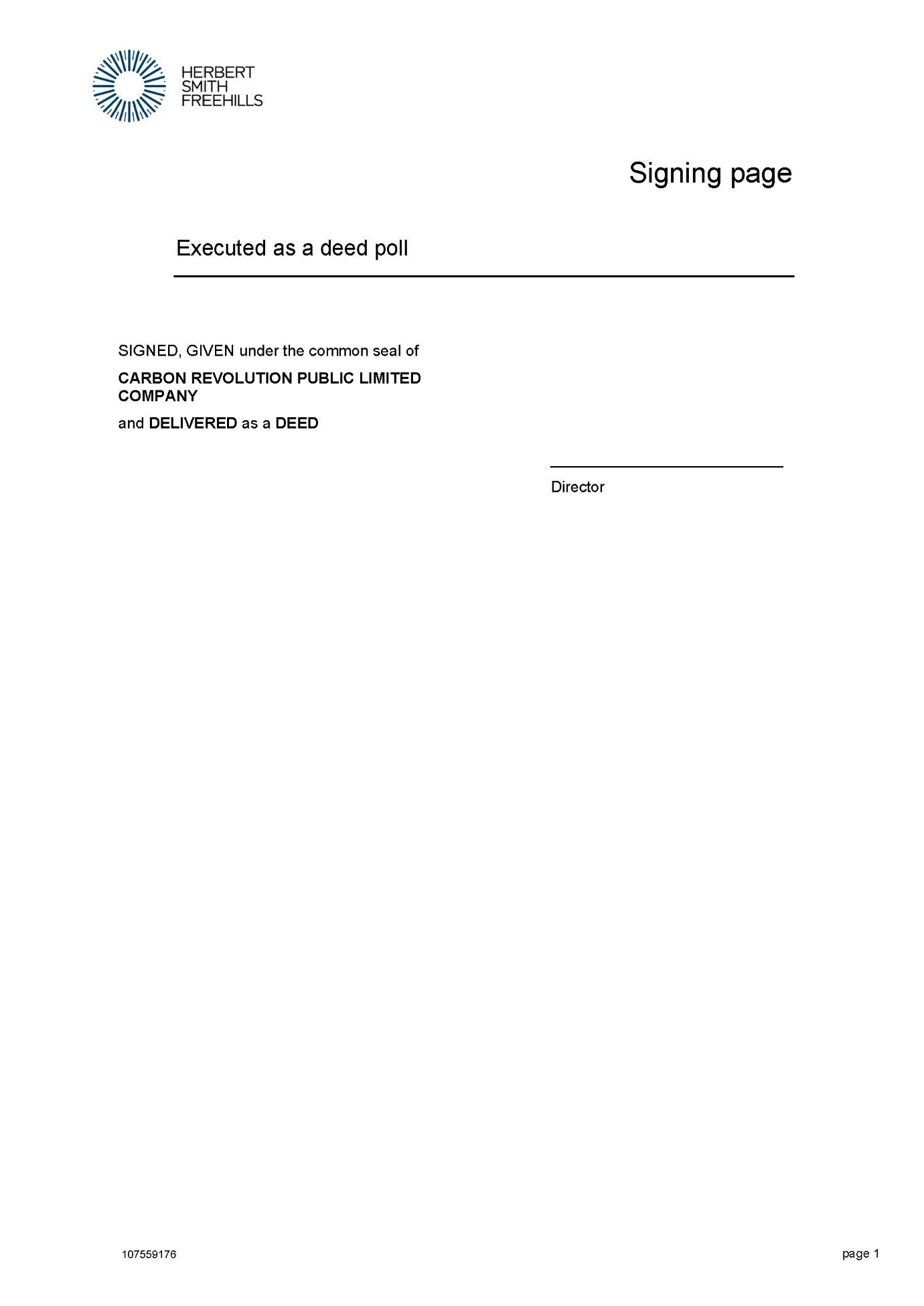
MOSHINSKY J:
Introduction
1 This is an application by the plaintiff, Carbon Revolution Limited (CBR), for orders under s 411(1) of the Corporations Act 2001 (Cth) (the Act) to convene and hold a meeting of its shareholders (the Scheme Meeting) to consider a proposed scheme of arrangement.
2 CBR is a public company limited by shares, registered in Victoria and listed on the Australian Securities Exchange (the ASX). CBR designs and manufactures carbon fibre wheels for the global automotive industry.
3 The proposed scheme is part of a broader transaction (the Transaction) with the commercial purpose of the business operated by CBR becoming listed on the NYSE American and having potential access to funding sources which are required to continue its operations. To this end, CBR proposes to “merge” with Twin Ridge Capital Acquisition Corp (the SPAC), a ‘special purpose acquisition company’ incorporated in the Cayman Islands and listed on the New York Stock Exchange. This will be effected by each of CBR and the SPAC becoming wholly-owned-subsidiaries of Carbon Revolution plc (an Irish company) (MergeCo), a ‘shelf company’, which will be listed on the NYSE American as part of the Transaction.
4 In order to achieve this outcome, the Transaction has two main elements:
(a) first, it is proposed that MergeCo will acquire the SPAC via a Business Combination Agreement (the BCA). In particular, the SPAC will merge with a wholly-owned subsidiary of MergeCo (namely, Poppettell Merger Sub, a Cayman Islands company (Merger Sub)) (Merger) and the SPAC’s shareholders will exchange their shares in the SPAC for shares in MergeCo (the Business Combination). The Business Combination must be approved by the SPAC shareholders under either or both of US and Caymans law;
(b) secondly, it is proposed that CBR will be acquired by MergeCo. This acquisition is to be effected by the cancellation of all CBR shares pursuant to an equal capital reduction (the Capital Reduction) in exchange for the issue of shares in MergeCo, pursuant to the scheme (the Scheme), which shares will be listed on the NYSE American. CBR will then issue one share to MergeCo and thereby become a wholly-owned subsidiary of MergeCo, and CBR will be de-listed from the ASX.
5 Upon implementation of the Transaction, CBR and the SPAC will both be wholly-owned subsidiaries of MergeCo, and the securities in MergeCo will be owned by the former CBR shareholders and the former security holders of the SPAC.
6 The parties’ respective obligations in relation to the Transaction are set out in a Scheme Implementation Deed (the SID) dated 30 November 2022 between CBR, the SPAC and MergeCo and in the BCA dated 29 November 2022 between CBR, the SPAC, MergeCo and Merger Sub.
7 Prior to entering into these arrangements, CBR had been investigating potential transactions both within Australia and internationally in order to provide a necessary injection of funds into the CBR business. The intent of these investigations was to enable the business to continue operating and to provide investment capital to support commercialisation of CBR’s product and facilitate the business’s path to profitability. The Transaction was identified at the time as the only transaction available to CBR to achieve this goal. Through a move to a US listing on NYSE American, it is expected that the Transaction will provide funding through the various arrangements disclosed in the Scheme Booklet that are unlikely to have been available if CBR remained listed on the ASX.
8 The directors of CBR unanimously recommend that CBR shareholders vote in favour of the Scheme and Capital Reduction, and intend to vote any CBR shares held or controlled by them in favour of the Scheme and Capital Reduction.
9 An independent expert report (IER) has been prepared by Grant Thornton Corporate Finance Pty Ltd (Grant Thornton). In the IER, Grant Thornton concludes that the Scheme and the Capital Reduction is not fair, but is reasonable, and is in the best interests of CBR shareholders, in the absence of a superior proposal.
10 CBR has prepared a draft scheme booklet (the Scheme Booklet) that it intends to dispatch to shareholders. The Scheme Booklet sets out a detailed description of the Transaction and its advantages and disadvantages, and contains a number of annexures (including a copy of the IER). It sets out the reasons for the directors’ recommendation that CBR shareholders vote in favour of the Scheme and Capital Reduction, and it summarises the conclusions of Grant Thornton.
11 This application was originally the subject of a hearing on 28 August 2023. Shortly before that hearing, CBR indicated to the Court that it would not be seeking orders on that day for the convening of a scheme meeting, but rather requested that the Court defer the making of such orders for approximately one week. This was due to uncertainty regarding the timing of certain steps in the United States.
12 Although CBR was not seeking the making of orders on that day, the hearing nevertheless proceeded on 28 August 2023, and counsel for CBR addressed a number of key issues as well as relying on the detailed outline of submissions (dated 25 August 2023) that had been filed in advance of that hearing. Counsel for the SPAC also appeared and made submissions on certain issues. The further hearing of the application was listed for hearing on 4 September 2023. This date was subsequently changed to today (6 September 2023) at CBR’s request.
13 The following material is before the Court:
(a) an affidavit of Alan Mitchell dated 13 June 2023 (Mitchell Affidavit);
(b) an affidavit of William P Russell Jr dated 22 August 2023;
(c) an affidavit of Ronan Donohoe dated 24 August 2023;
(d) affidavits of David Nock dated 23 August 2023 (First Nock Affidavit), 25 August 2023, and 28 August 2023; and
(e) affidavits of Alexandra Lockie dated 27 August 2023 and 6 September 2023.
14 As already noted, counsel for CBR has provided a detailed outline of submissions. These reasons are substantially based on that outline of submissions.
15 For the reasons that follow, I consider that it is appropriate to make orders convening the Scheme Meeting and the related orders that are sought by CBR.
De-SPAC Transaction
16 As far as CBR and its advisors are aware, this is the second Australian court application under Pt 5.1 of the Act in relation to a scheme of arrangement involving a “de-SPAC” transaction. The first application concerned a scheme of arrangement between Security Matters Limited (SMX) and its members. At a general level, the basic transaction structure in SMX was the same as in the present case. In Re Security Matters Limited [2023] FCA 19, Anderson J provided a description of a special purpose acquisition company (or SPAC) at [17]-[19]. See also Re Security Matters Limited (No 3) [2023] FCA 140 at [4]-[5] per O’Callaghan J.
Key steps in the Transaction
17 The Scheme and the SID are both subject to a number of conditions precedent, including that shareholders of the SPAC vote in favour of the Merger, CBR shareholders vote in favour of the Scheme and the Capital Reduction, and the Court approves the Scheme at the second Court hearing. The conditions precedent are summarised in section 12.5(b) of the Scheme Booklet.
18 If all conditions precedent are satisfied (or waived), then the Scheme becomes effective upon the lodgement of a copy of the Court’s approval orders with ASIC.
19 It is proposed that the Scheme Meeting to vote on the Scheme will commence at 1.00 pm on 9 October 2023, and CBR shareholders will be asked to vote on a resolution to agree to the Scheme. The General Meeting to vote on the Capital Reduction will occur following the conclusion of the Scheme Meeting. The Capital Reduction must be approved by CBR shareholders pursuant to s 256C(1) of the Act. The resolution proposed in relation to the Capital Reduction provides that, subject to and conditional upon the Scheme becoming effective, the share capital of CBR be reduced on the Implementation Date by cancelling all CBR shares on issue on the Implementation Date in exchange for the Scheme Consideration.
20 The terms of the Scheme are set out in the proposed Scheme of Arrangement, which is Annexure 2 to the Scheme Booklet. The Scheme also refers to the other aspects of the Transaction and the sequence in which they are to occur. In particular, it provides that the following steps are to occur in the following sequence:
(a) first, the Merger between the SPAC and Merger Sub under the BCA is to complete. The Scheme provides that, by the Business Day before the Implementation Date, MergeCo must procure that the certificate of merger is issued by the Registrar of Companies of the Cayman Islands, on the basis that the Merger will take effect when the Registrar of Companies issues the certificate (Clause 4.2 of the Scheme);
(b) secondly, on or before the Implementation Date, MergeCo must issue the Scheme Consideration in the form of MergeCo shares to Cede & Co for the benefit of Scheme Shareholders (clause 5.1(a) of the Scheme);
(c) thirdly, and subject to the first and second steps referred to above having occurred, all of the Scheme Shares will be cancelled pursuant to the Capital Reduction Resolution, and CBR must issue one CBR share to MergeCo (clause 4.3 of the Scheme).
Relevant principles
21 The principles that apply upon an application to convene a scheme meeting are well-known and have been referred to in a number of recent decisions in this Court: see, for example, Re Verdant Minerals [2019] FCA 556 at [20]-[30]; Re Japara Healthcare Limited [2021] FCA 1150; 156 ACSR 695 at [23]-[34]; Re 5G Networks Limited [2021] FCA 1189 at [22]-[25]; Re RXP Services Limited [2021] FCA 38 at [16]-[19]; Re Citadel Group Limited [2020] FCA 1580; 148 ACSR 598 at [24]-[27]; Re DWS Limited [2020] FCA 1590; 148 ACSR 616 at [14]-[17]; Re Healthscope Limited [2019] FCA 542; 139 ACSR 608 at [43]ff; Re Amcor Ltd [2019] FCA 346 at [45]ff. The principles were summarised by Davies J in Re Cytopia Ltd [2009] VSC 560 at [3]:
The authorities make it clear that the Court’s role at this stage is not to express a view on whether the proposed scheme should be approved. It is also clear that it is not the Court’s role to usurp the shareholders’ decision, by attempting to intrude its own commercial judgment. The Court is to be concerned with whether there is adequate disclosure to the shareholders in the Scheme Booklet (or explanatory memorandum), whether the legal requirements otherwise have been complied with and whether the scheme, on its face, is one that is sufficiently “fair and reasonable” to be capable of being put to shareholders for their approval or rejection.
22 It has consistently been held that the question whether or not to accept particular consideration for shares is quintessentially a commercial matter for the members to assess, and they ought not be prevented from having the opportunity to do so, provided that the Court can be satisfied that they are acting on sufficient information and with time to consider what they are voting on. Therefore, if the arrangement is one that seems fit for consideration by the meeting of members, and is a commercial proposition likely to gain the Court’s approval if passed by the necessary majorities, then orders should be made to convene the meeting.
23 The Court’s task at the first court hearing is to assess, first, whether the statutory prerequisites to the making of orders convening a meeting have been met and, second, whether it is appropriate for the Court to exercise its discretion in favour of making those orders. Each of these matters will be considered in turn.
Statutory prerequisites
24 Section 411(1) of the Act requires that the plaintiff has made an application in relation to a compromise or arrangement that is proposed between a Pt 5.1 body and its members. CBR has satisfied these requirements in the present case:
(a) this application was made by originating process filed on 14 June 2023;
(b) a “Part 5.1 body” is defined in s 9 of the Act to include a company registered under the Act, which CBR is; and
(c) the proposed Scheme is an “arrangement” within the meaning of s 411(1).
25 The requirement in s 411(2)(a) of the Act to give ASIC 14 days’ notice of the first court hearing has been satisfied, as has the requirement in s 411(2)(b) that ASIC be given a reasonable opportunity to examine the terms of the proposed Scheme and the draft explanatory statement, and to make submissions to the Court.
26 Rule 2.4(1) of Federal Court (Corporations) Rules 2000 (Cth) (the Rules) requires that, unless the Court otherwise directs, an originating process must be supported by an affidavit stating the facts in support of the process. This requirement has been satisfied in the present case by the Mitchell Affidavit which was filed with the originating process. That affidavit identifies in brief terms the nature of the Scheme.
27 As required by r 2.4(2) of the Rules, the Mitchell Affidavit annexes an ASIC company extract recording the results of a search of the records of ASIC in relation to CBR carried out no earlier than seven days before the originating process was filed.
28 As required by r 3.2(a) and (b)(i) of the Rules, evidence about the willingness of the proposed chairperson and alternate chairperson to chair the Scheme Meeting has been provided (on an “information and belief” basis in the First Nock Affidavit).
29 Sub-rules 3.2(b)(ii) and (iii) of the Rules provide that the plaintiff must file an affidavit stating that each person nominated to act as chairperson:
(ii) has had no previous relationship or dealing with the body, or any other person interested in the proposed compromise or arrangement, except as disclosed in the affidavit;
(iii) has no interest or obligation that may give rise to a conflict of interest or duty if the person were to act as chairperson of the meeting, except as disclosed in the affidavit;
30 CBR has provided evidence of these matters.
31 The proposed orders annex a copy of the Scheme, thus satisfying r 3.3(1) of the Rules.
32 In addition, the information to be provided to shareholders for the purposes of their consideration of the Scheme is regulated by s 412 and reg. 5.1.01 of, and Sch 8 to, the Corporations Regulations 2001 (Cth) (the Regulations). In particular, s 412(1) of the Act and Sch 8 (Pt 3) to the Regulations set out the disclosure requirements of the explanatory statement (which is included within the Scheme Booklet).
33 There are three aspects to the requirements of s 412(1):
(a) first, the explanatory statement must explain the effect of the compromise or arrangement, and in particular state any material interests of the directors, and the effect on those interests of the compromise or arrangement so far as it is different from the effect on the like interests of other persons. The effect of the Scheme is addressed in section 4 of the Scheme Booklet, and the required information in relation to the material interests of directors is addressed in sections 12.1 to 12.4 of the Scheme Booklet;
(b) secondly, the explanatory statement must set out the prescribed information, being the information set out in reg 5.1.01 and Sch 8 to the Regulations. The evidence as to verification of the Scheme Booklet demonstrates that this requirement has been satisfied;
(c) thirdly, the explanatory statement must set out any other information that is material to the making of a decision whether or not to agree to the compromise or arrangement. In this respect, it is submitted, and I accept, that the Scheme Booklet is clear and comprehensive, and (along with the IER annexed to the Scheme Booklet) contains a detailed evaluation of the Scheme, presented in a way that enables a CBR shareholder to form their own view of the merits of the Scheme.
34 More generally, the information in the Scheme Booklet has been subject to thorough verification processes, as described in the First Nock Affidavit and the Russell Affidavit.
35 It is necessary for the Scheme Booklet to be registered by ASIC before being sent to CBR shareholders. Before registering the Scheme Booklet, ASIC must conclude that it appears to comply with the requirements of the Act, and must form the opinion that the Scheme Booklet does not contain any matter that is false in a material particular or materially misleading in the form and context where it appears. Assuming the Scheme Booklet is registered, this provides further assurance as to the satisfaction of the relevant disclosure requirements.
36 In light of the procedural requirements having been satisfied, the Court’s discretion to make the convening orders is enlivened.
Discretion
37 The relevant discretionary considerations involve two main question: first, whether the Scheme is fit for consideration by the members; and secondly, whether the members are to be properly informed as to the nature of the Scheme.
Scheme is fit for consideration
38 CBR submits, and I accept, that the Scheme is fit for consideration by its members, in that:
(a) the Scheme is of such a nature and cast in such terms that, if agreed to at the Scheme Meeting, the Court would be likely to approve the Scheme at the second court hearing;
(b) there is no issue arising from the Scheme which would unquestionably lead to a refusal by the Court to approve the Scheme at the approval hearing; and
(c) it cannot be said that the Scheme is on its face: “so blatantly unfair or otherwise inappropriate that it should be stopped in its tracks before going any further”: see Re Foundation Healthcare Ltd [2002] FCA 742; 42 ACSR 252 at [44].
39 In addressing this first question of whether a scheme is fit for consideration by the members, the Court will scrutinise the terms of a scheme to satisfy itself that there is no unfairness that would be likely to preclude approval of the scheme. In its outline of submissions, CBR raises the following particular features of the Scheme for the attention of the Court:
(a) Performance risk.
(b) SPAC redemptions.
(c) Opinion of the independent expert.
(d) Break fee and exclusivity arrangements.
(e) New Debt Program.
(f) Treatment of rights, options and restricted shares.
(g) Common director.
(h) Ineligible Foreign Shareholders.
40 For the reasons set out in CBR’s outline of submissions, I consider that none of these matters gives rise to a concern that the Scheme is not fit for consideration by its members in the requisite sense. In these reasons, I will address three of the features set out above, namely: SPAC redemptions; the opinion of the independent expert; and the New Debt Program.
SPAC Redemptions
41 As is customary for special purpose acquisition companies, the SPAC’s ordinary shares that are held by the public (referred to in the Scheme Booklet as Class A SPAC Shares) contain a redemption feature that allows for the redemption of those shares in the event of a shareholder vote in connection with both the extension of the SPAC’s business combination deadline (that is, the time by which it must “combine” with an operating business) and a business combination itself (which the Transaction will amount to). Each redeeming share is entitled to its pro rata portion of the proceeds of the SPAC’s trust account. After all redemptions, the remaining proceeds from the trust account will be available to the group for which MergeCo will be the ultimate parent upon implementation.
42 On 6 March 2023, SPAC shareholders approved an extension to complete a business combination from the initial business combination deadline of 8 March 2023 to 8 June 2023, and to allow the SPAC, without subsequent shareholder approval, to elect to extend the date to complete a business combination on a monthly basis for up to nine times by an additional one month each time, until 8 March 2024. The redemption rate in connection with this approval was 70.6%.
43 The SPAC’s public shareholders may make another election to redeem their shares in connection with their vote on the Merger.
44 In particular, the Merger requires SPAC shareholder approval, which will be sought by way of a proxy statement for an extraordinary general meeting of SPAC shareholders (SPAC Meeting), which forms part of a Form F-4 registration statement (F-4) that has been submitted in preliminary form with the United States Securities and Exchange Commission (SEC). The proxy statement may not be despatched to SPAC shareholders to convene the SPAC Meeting until such time as the SEC declares the F-4 “effective”. It is currently anticipated that the SEC will declare the F-4 effective on 6 September 2023, being today. Based on this, the SPAC Meeting to vote on the Merger is expected to be held on 26 September 2023, prior to the date of the Scheme Meeting.
45 The deadline for SPAC shareholders to submit redemption requests in connection with the Merger is two business days prior to the SPAC Meeting. After that date and up until the date of the SPAC Meeting, SPAC shareholders can withdraw their redemption requests but cannot submit new redemption requests.
46 Accordingly, if the Court makes the orders sought by CBR, the Scheme Booklet will be dispatched prior to the final redemption rate being known, although the final redemption rate will be known before proxies are due for the Scheme Meeting, which is to take place on 9 October 2023 (on the currently anticipated timetable).
47 CBR has raised this issue with ASIC, and noted that the following approach has been taken to deal with this issue in the Scheme Booklet:
(a) CBR has disclosed multiple redemption scenarios, including a scenario of 100% redemptions, so as to enable CBR shareholders to understand the funding and ownership implications of different redemption scenarios. The CBR directors have also recommended shareholders vote in favour of the Scheme regardless of the rate of redemptions, for the reasons set out in the booklet (see section 1 of the Scheme Booklet);
(b) the independent expert has, in the IER, assumed the worst case scenario for CBR shareholders with 100% redemptions as its primary redemption assumption, and included sensitivity analysis should the redemption rate be more favourable. In each case, the independent expert has found that the transaction is not fair, but is reasonable and in the best interests of scheme security holders;
(c) the Scheme Booklet clearly and prominently discloses the intention to provide supplementary disclosure to inform CBR shareholders of the redemption rate once that information becomes available, via an ASX announcement and on the CBR website (see section 6 of the Chairman’s Letter, the Key dates section, FAQs section and section 12.10 of the Scheme Booklet); and
(d) however, as noted above, the proxy statement cannot be despatched to SPAC shareholders to convene the SPAC Meeting until such time as the SEC declares the F-4 “effective”.
48 ASIC has not taken issue with this proposed approach to disclosure in the Scheme Booklet.
49 CBR submits, and I accept, that the above proposals in relation to notifying CBR shareholders of the redemption rate are appropriate in the circumstances, and that these issues do not provide a reason for the Court declining to make orders that CBR convene the Scheme Meeting. In particular:
(a) while the redemption rate will not be known at the time of despatch of the Scheme Booklet, CBR has taken all reasonable steps to deal with this uncertainty in the disclosures in the Scheme Booklet, and the independent expert’s opinion takes into account all relevant possibilities in relation to the ultimate redemption rate; and
(b) it is very difficult to see how the independent expert could alter its opinion based on the actual redemption rate given the fact that the IER in its current form already considers all relevant possible redemption scenarios and the independent expert concludes that the transaction is not fair, but is reasonable and in the best interests of CBR shareholders, in all redemption scenarios.
Opinion of the independent expert
50 The opinion of Grant Thornton is that the Scheme is not fair, but is reasonable and is in the best interests of CBR shareholders, in the absence of a superior proposal emerging.
51 In order to understand the interaction between these concepts, regard must be had to the Regulations and ASIC Regulatory Guide 111: Content of expert reports (RG 111).
52 In particular, where an expert report is obtained and provided to shareholders, cl 8303 of Sch 8 to the Regulations requires the report to set out an opinion on whether the scheme is in “the best interests of the members of the company”. The effect of RG 111 (in particular at [10]-[23]) is that this opinion should be prepared on the following bases:
(a) the expert should consider and provide an opinion on whether the transaction is “fair”, and whether it is “reasonable”. These are distinct criteria;
(b) if the expert concludes that the proposal is “fair and reasonable”, it will also be able to conclude that the scheme is in the best interests of the members of the company;
(c) an offer is “fair” if the value of the consideration is equal to or greater than the value of the securities the subject of the offer;
(d) an offer is “reasonable” if it is fair. It might also be “reasonable” if, despite being “not fair”, the expert believes that there are sufficient reasons for security holders to accept the offer in the absence of any higher bid;
(e) for example, a bidder may offer a price which is “not fair” where the target is in financial distress. This is because the fair value of the target securities should be determined on the basis of a knowledgeable and willing, but not anxious, seller that is able to consider alternative options to the bid (eg, an orderly realisation of the target’s assets). Such an offer may nonetheless be reasonable if the alternative methods of remedying the financial distress are likely to be less attractive to security holders than a successful offer;
(f) if the expert concludes that the proposal is “not fair but reasonable”, it is open to the expert to also conclude that the scheme is “in the best interests of the members of the company”;
(g) an expert concluding that an offer is not fair, but reasonable, should clearly explain the meaning of this opinion, why the expert has reached this conclusion and the significance of the conclusion to the decision to be made by security holders (eg, what it might mean for the security holder’s decision-making). In addition, the expert should clearly say that the consideration is not equal to or greater than the value of the securities the subject of the scheme, but there are sufficient reasons for security holders to vote in favour of the scheme in the absence of a higher offer.
53 The IER in the present case complies with these requirements.
54 A number of cases in the schemes context have considered expert opinions that a scheme is not fair but reasonable: see, for example, Re Beadell Resources Ltd [2018] WASC 410; 133 ACSR 600 at [59]-[72].
55 CBR submits, and I accept, that the conclusion provided in the IER is not a reason to refuse to convene the Scheme Meeting.
New Debt Program
56 As noted above, it is expected that the Transaction will provide funding to enable CBR’s business to continue operating and to provide investment capital to support commercialisation of CBR’s product, and that this will be achieved through the various actual and potential funding arrangements disclosed in the Scheme Booklet (that are unlikely to have been available if CBR remained listed on the ASX).
57 One of those funding sources is referred to as the New Debt Program, and is summarised in the Chairman’s Letter in the Scheme Booklet.
58 CBR raises for the attention of the Court the issue of whether the New Debt Facility could be said to impermissibly coerce CBR shareholders into approving the Scheme and, if so, whether the Court should refuse to exercise its discretion under s 411(1) to order that the Scheme Meeting be held. The issue arises because, if the Transaction does not proceed by 30 October 2023, including if CBR shareholders do not vote in favour of the Scheme and Capital Reduction, the principal and all accrued interest under the New Debt Program will be repayable on 30 October 2023 rather than 1 May 2027, and a fee of 7% of the principal will be payable to the Servicer. In these circumstances, it could be argued that shareholders may be coerced into voting in favour of the Scheme and Capital Reduction in order to avoid this outcome.
59 In the schemes of arrangement context, the issue of possible shareholder coercion is commonly mentioned in relation to break fees, and courts often have regard to the Takeovers Panel’s Guidance Note concerning lock-up devices: Takeovers Panel, Guidance Note 7 – Lock Up Devices (5th issue, 8 August 2023) (GN7). Although GN7 does not directly apply to an application under s 411(1) of the Act, in considering whether the New Debt Program has an unreasonably coercive effect that should preclude the Scheme going ahead, it is appropriate for the Court to have regard to the principles set out in GN7, as is commonly done in relation to break fees and exclusivity provisions. The issue that arises for consideration in the present case is “substantial coercion” (rather than any effect on competition involving current or potential bidders).
60 CBR submits, and I accept, that when regard is had to the commercial realities of the Transaction and the overall choice presented to CBR shareholders in relation to the future of the company, the terms of the New Debt Program are unlikely to have any coercive effect (or, in the terms of GN7, shareholders are unlikely to be “substantially coerced into accepting the bid”).
61 Further, even if (contrary to the above) some element of coercion existed, this would need to be balanced against the overall benefits of the Transaction for shareholders as opposed to the overall outcome if the Transaction does not proceed. In CBR’s submission, which I accept, the result of undertaking such a balancing exercise is that any element of coercion resulting from the terms of the New Debt Program is not impermissible coercion and does not present a reason for the Court to decline to order that shareholders be allowed to meet to consider the Transaction and vote upon the Scheme.
62 Having regard to the cases and matters discussed in CBR’s outline of submissions, I consider that any coercive element of the New Debt Program is substantially outweighed by the overall benefits of the New Debt Program to CBR shareholders, as well as the fact that CBR’s directors were satisfied with the commercial and competitive benefits to CBR shareholders, and the context in which the New Debt Program was agreed and the effect of all the arrangements in their surrounding circumstances.
63 Further, the Scheme Booklet contains full and fair disclosure of all information material to the decision whether to vote for or against the Scheme, including on the New Debt Program.
64 Accordingly, I do not consider this issue to provide a reason for the Court to decline to make orders convening the Scheme Meeting.
Members are to be properly informed
65 The second principal aspect relevant to the exercise of the Court’s discretion is the adequacy of the information to be provided to shareholders.
66 As noted above, s 412(1) of the Act and Sch 8 (Pt 3) to the Regulations set out the disclosure requirements of the explanatory statement (which is included within the Scheme Booklet). The prescription of the contents of the explanatory statement in these provisions ordinarily provides guidance to the Court in assessing this matter, bearing in mind that these applications are made in a summary way. Accordingly, if the Court is satisfied that the statutory disclosure requirements are met, it will ordinarily be satisfied that information to be provided to shareholders is adequate for the purposes of the exercise of the Court’s discretion to convene a meeting.
67 Having reviewed the material, I consider that CBR shareholders are to be presented with an appropriately detailed and clear explanation of the Scheme in the Scheme Booklet, and they will have the benefit of the opinion of the independent expert as set out in the IER. They also have the benefit of the recommendation of the directors in relation to the Scheme.
Conclusion on the exercise of discretion
68 For these reasons, I am satisfied that the Scheme is of such a nature and cast in such terms that, if it achieves the statutory majorities at the Scheme Meeting, the Court would be likely to approve it, and that it is therefore appropriate to make the orders sought convening the Scheme Meeting.
Dispatch of Scheme Booklet and Scheme Meeting
69 CBR has filed evidence as to the manner in which the Scheme Booklet (which includes the notices of meeting) is proposed to be sent.
70 In summary, the proposal is to adopt a mixture of electronic and hard-copy dispatch, as has been common in schemes of arrangement for some time, and which complies with the relevant provisions of the Act.
71 It is proposed that the Scheme Meeting will commence at 1.00 pm on 9 October 2023, and that it will be conducted as a hybrid meeting, that is, providing shareholders with the opportunity to attend either in-person or electronically via an online platform. I accept that the Court has power to make this order, which has become common in schemes of arrangement.
Notice of approval hearing
72 Rule 3.4 of the Rules provides that, unless the Court otherwise orders, the plaintiff must publish a notice of the hearing of the second court hearing (that is, the application for approval of the Scheme) in a newspaper at least five days before the date of the hearing, and the notice must be in accordance with Form 6.
73 In a number of cases, advertising by newspaper has not been considered necessary given that effective electronic notice options now exist. I am content to dispense with compliance with r 3.4 of the Rules.
Conclusion
74 I will therefore make orders substantially in the terms sought by CBR.
I certify that the preceding seventy-four (74) numbered paragraphs are a true copy of the Reasons for Judgment of the Honourable Justice Moshinsky. |
Associate:




